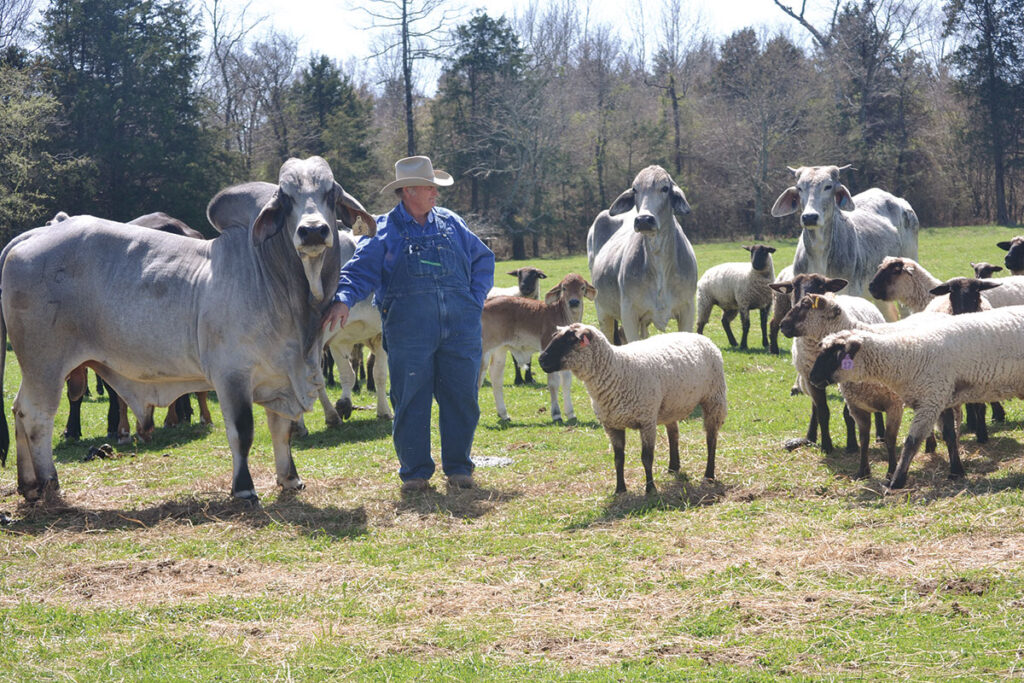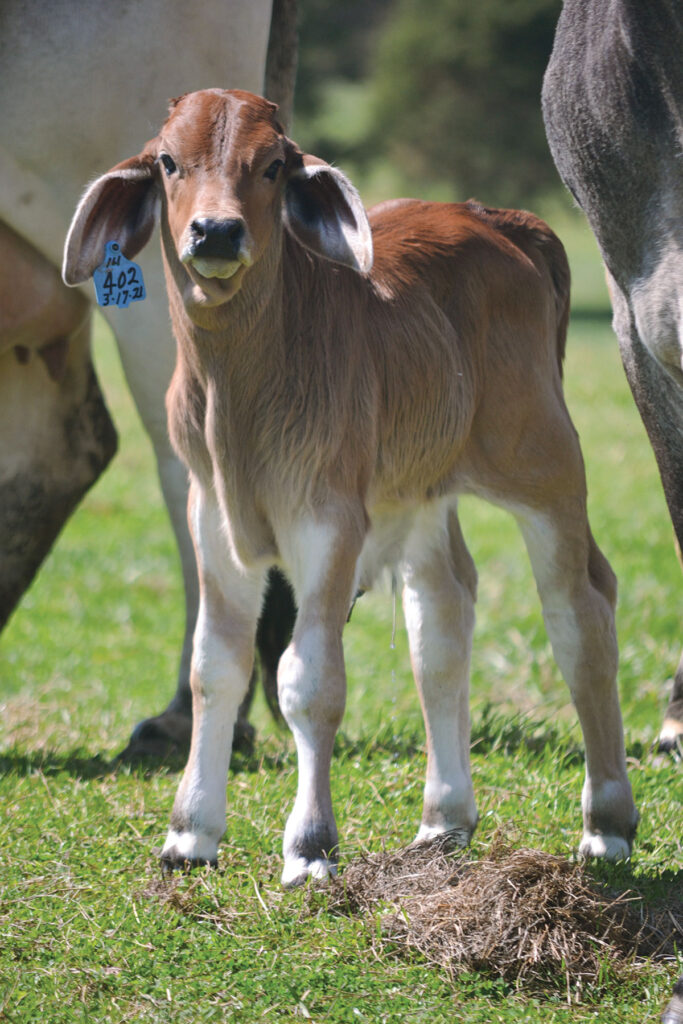
The Diamond A Ranch is home to registered and commercial cattle, as well as a sheep flock
Herman and Kathy Ahrens live on the Diamond A Ranch in Lamar, Ark.
Herman comes from a Texas family were Brahmans, sheep and goats were common. Herman’s father Arnold used a Brahman bull to raise commercial cattle, which deeply influenced his son. The Brahmans made sense because they are more heat tolerant and have some natural resistance to worms and flies. When Herman was growing up, the family did not show. Later when his younger brother Paul grew older, they did. Herman purchased a young Brahman bull calf to show. While showing it at the Johnson County Fair, he met Kathy who later became his wife. She worked as an LPN in a nearby hospital and eventually retired as an industrial nurse.
The couple has raised three well-educated children. Their oldest son Chad, is manager of a hotel in Conway while. Older daughter Chelsea is a small ruminant expert for the Extension Service and younger daughter Crystal works in Baton Rouge. La., while finishing her PhD. She works remotely for the American Meat Federation as an education specialist. Herman and Kathy’s children were raised on the family farm, and the original purpose of the sheep herd was to provide animals for the children to show. The couple has a new granddaughter named Ellie Ann they are eagerly awaiting to introduce to the family farm.
Even though Herman worked at the I-40 Livestock Auction in Ozark, Ark., on sale days for 10 years, he changed directions and has worked for the Johnson County Co-Op for 20 years, where his detailed agricultural knowledge is of great use. However, the workdays run from 7:30 a.m. to 5 p.m., in addition to working until noon on Saturdays. The consequences of his work schedule is that he must manage both time and organization carefully in order to meet the demands of his ranch as well as his job.
Early on, Herman planned to have 50 Brahmans, with 25 registered head of breeding stock and the other 25 bred by a Hereford bull to produce F1 tigerstriped cattle. After the drought in the 1980s, however, he changed his goals and feels his current herds best meet his life. The ranch supports a 25-head cow herd of registered Brahmans bred by a registered Brahman bull, a 30-head herd of Sim/Angus/Brahman cross females bred by a registered Angus bull, and a hobby show herd of 25 Suffolk/Hampshire ewes, with many sold for showing.
“Learning how to best to manage a registered herd requires time and investment because you can buy three good commercial cows for the same cost as one registered cow,” Herman explained. “That makes in difficult for someone like me who doesn’t have a boatload of money or a family herd to develop from.”
The last bull Herman purchased came from a sale in Georgia in 2019. Owner of Infinity Cattle Service Chris Shivers helped Herman select the best bull in his price range from a group of 70 bulls, with confirmation and disposition being his primary priorities. He retains replacement heifers and immediately culls any high-headed animals.
“Brahmans tend to be a one-man breed so that genetic tendencies towards high headedness can be compensated by my relationship with stock,” Herman explained. “Nonetheless, I have to be careful, especially when the mommas get their babies.”
Because of time constraints and the fact that shows occur year-round, Herman keeps his bull with his Brahman females so that show calves of any age are available for customers. He has developed repeat customers.
“The show world is always changing but Brahmans add frame and muscle, as well as growth efficiency so they are again popular with cattlemen,” Herman explained.
While both cattle herds receive the same health protocols, he does feed the show stock his 14-percent protein and 4-percent fat ration longer. People typically buy bulls at 15 months or older when they are ready to go to work, while heifers are frequently sold after weaning so new owners can prepare them for the show ring. Last year, one of his heifers won supreme heifer at a show.
Commercial calves are sold at the I-40 Livestock Auction in Ozark The auction is close and has a market that does well for Herman. Calves are weaned at 7 months and sold having received two rounds of shots. Culling females from both herds is by age, health issues or producing poor quality calves while proven females allowed to miss one cycle before being culled.
“Our biggest health concern is flies and worms,” Herman said. The cattle are wormed twice a year with added support coming from a pour on wormer and summer mineral containing added fly control.”
Once 50 strong when Herman and Kathy’s children were young and showing, the sheep herd is now more of a hobby, with half of the lambs sold as show animals. The other half of the lambs are sold at auction in either Diamond, Mo., or Salem, Ark., the closest good markets with a few sold as meat animals. Herman believes sheep makes sense for younger children to show because caring for and learning to show is easier and safer with them.
“While parasites have always been a problem was sheep, foot rot has become more prevalent in the last 20 years and harder to control,” Herman said. “Fortunately, most of my land is hilly with plenty of high ground.”
Sheep run with the cows. According to Herman, the sheep like weeds and therefore help with weed control, while the cattle like grass so that the different ruminants partner up well.
Another advantage of the sheep herd is that sheep are easier to handle and less time-consuming. Lambs are born from mid-January to March 1 and are fed a 14-percent protein and 4-percent fat ration as well. One consideration, however, is that sheep cannot tolerate copper especially in their minerals. Consequently, Herman places sheep mineral through the creep gate and the sheep seemed to naturally select it over cattle mineral.
“You never know,” Herman commented. “Perhaps Ellie Ann will want to show sheep.”








